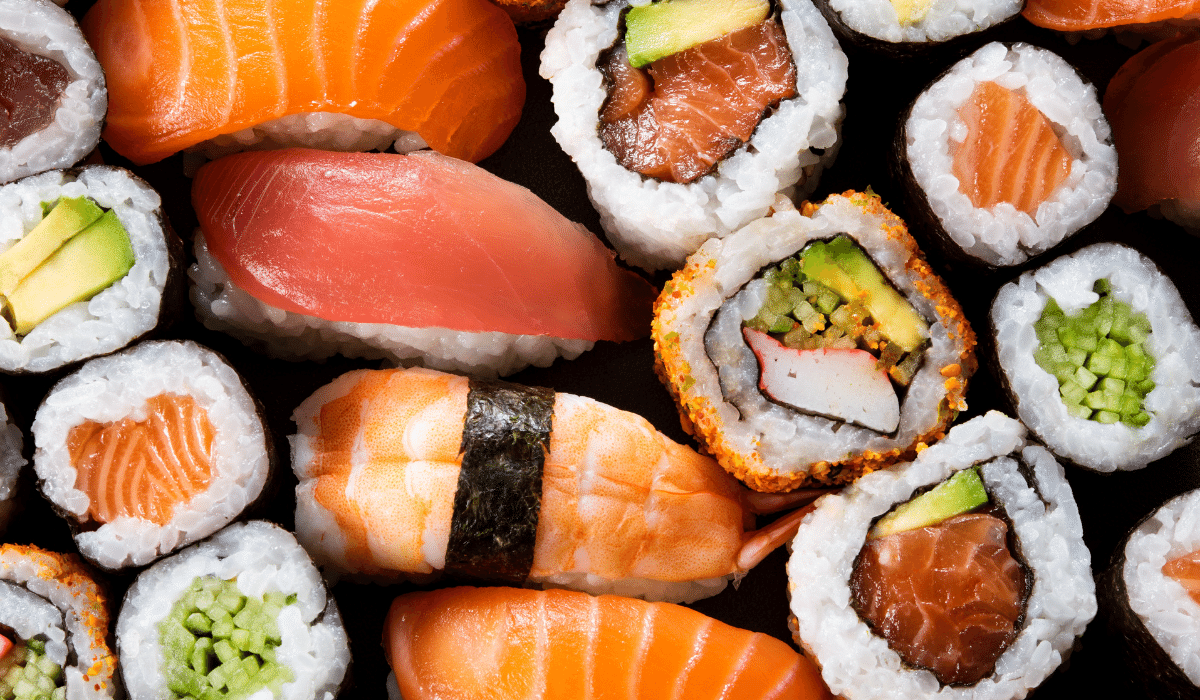Even though both sushi and sashimi are Japanese foods, there are several key distinctions between the two.
Have you ever been in a Japanese restaurant and been unsure of what to order after looking at the menu? There are so many delectable foods, from udon and soba noodles to sushi and sashimi, but if you are unfamiliar with the cuisine, it can frequently be bewildering. Sushi is the subject of one of the biggest myths. Although sushi is one of the most well-known dishes in Japanese restaurants, the phrase is also frequently misused. You may not be aware that there are various varieties of sushi. And that sashimi isn’t the same as sushi but rather a distinct food all on its own? It can be confusing, as we previously stated, but don’t worry! You’ll be ordering Japanese food like a pro once you understand the differences between sushi and sashimi.
Sushi
Any dish that combines ingredients with vinegared rice and is served in bite-sized pieces is considered sushi. . The word “sushi” specifically refers to the process of preparing rice used to make sushi. Sushi is made with a specific sort of short-grain rice that has been cooked with rice wine vinegar. Making sushi rolls and other foods is possible because the vinegared rice clumps together and has a distinct flavour of its own.
Sushi is often made using fish and other types of seafood. Sometimes, eggs or vegetables like cucumber
Sashimi
Sashimi is a Japanese word that roughly translates to “pierced body” and describes a dish made of thinly sliced fish or various types of meat. Soy sauce is the only dipping sauce used with sashimi. The flavor of the meat will be more pronounced as a result.
Fish appropriate for sashimi is some of the greatest seafood available. It is caught on a single line rather than a net, and after it is landed, it is immediately killed and iced, which allows it to keep its freshness with little lactic acid buildup or degradation. Additional meats can be served raw in Japan, including chicken, beef, and even horse.
Whether sushi is ordered as an appetizer or consumed as a major course, it is both delectable and varied.
Although some people might confuse the terms sashimi and nigiri, they are quite different. Why?
Because technically speaking, sashimi is not a type of sushi at all. Yes, there is raw fish involved, but there is no rice of any type. Rice is a crucial ingredient in sushi.
Alternatively, sashimi means “pierced body” or “pierced meat.” Its name suggests that it only consists of incredibly thin, expertly sliced pieces of raw meat. The fish is eaten traditionally with just a dab of soy sauce and stands on its own without the addition of rice to enhance the flavour.
Furthermore, unlike nigiri, sashimi is not limited to fish. even though salmon-based sashimi is typically served in restaurants.
Because technically speaking, sashimi is not a type of sushi at all. Yes, there is raw fish involved, but there is no rice of any type. Rice is a crucial ingredient in sushi. Alternatively, sashimi means “pierced body” or “pierced meat.”
Sashimi translates as “pierced fish.” While a lot of people mistakenly believe that sushi also contains raw fish, it is vinegar rice combined with a variety of additional components, some of which may or may not include cooked fish.
Sushi is defined as any dish in which this tasty, sticky rice is combined with another component (such as fish or vegetables).
Yes, sushi isn’t solely made from fish. Although most people think of sushi as a dish made with raw fish, this is not true. All kinds of ingredients, whether raw or cooked, can be used to make sushi, including cucumber, avocado, mango, fried shrimp, tofu, and even eggs.
